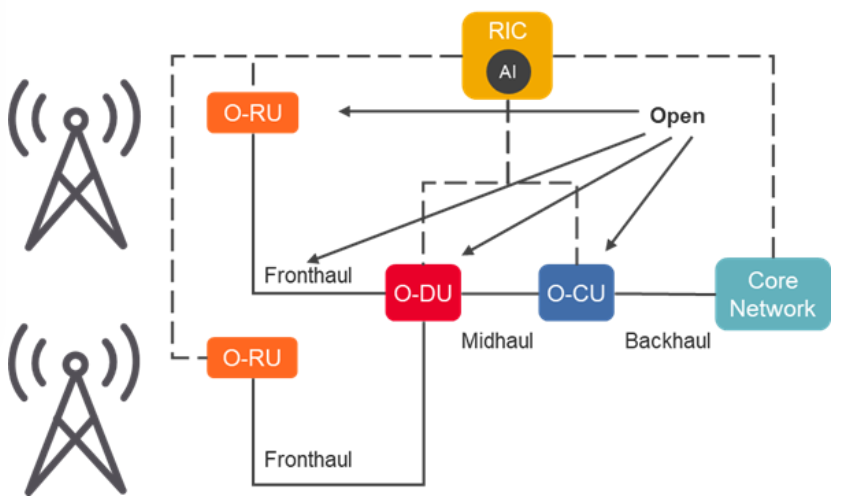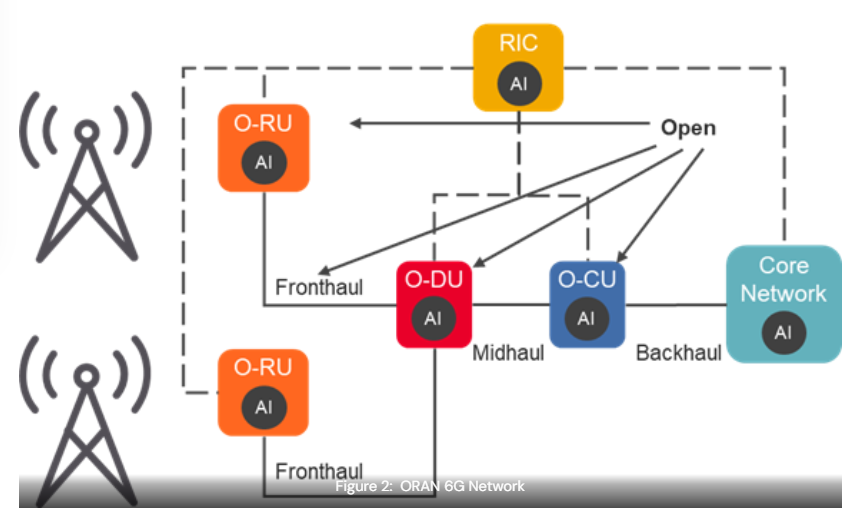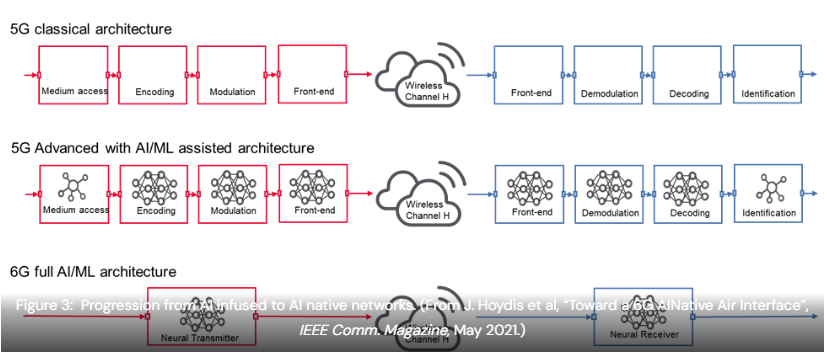(AI) Artificial Intelligence Native Applications in 5G and 6G Networks

(AI) Artificial Intelligence Native Applications in 5G and 6G Networks
With the artificial intelligence (AI) revolution has arrived. With the public release of applications like ChatGPT, people are getting first-hand experience with the power and potential of deep neural networks and machine learning (ML).
ChatGPT is a language model that has been trained on text from a large amount of text-based content on the Internet and books, allowing it to generate human-like text. This type of application is an example of the benefits of artificial intelligence. ChatGPT can process a large amount of training data and optimize the output of complex scenarios.
Wireless networks are inherently complex, generate large amounts of data, and become increasingly more complex as new technologies are introduced. This makes AI an ideal tool for optimizing wireless networks.
Artificial Intelligence in 5G Networks
As 5G matures, the 3rd Generation Partnership Project (3GPP), the standardization body that maintains cellular standards, has introduced artificial intelligence and machine learning for research.
AI applications under consideration are mainly at the air interface and include network energy conservation, load balancing and mobility optimization. The potential use cases in the air interface are so numerous that a small number have been selected for study in the upcoming 3GPP Release 18, including channel state information (CSI) feedback, beam management and positioning.
It’s worth noting that 3GPP is not developing AI/ML models. Instead, it seeks to create a common framework and evaluation method for AI/ML models added to different air interface capabilities.
Beyond 3GPP and air interfaces, the O-RAN Alliance is exploring how AI/ML can be used to improve network orchestration. For example, the O-RAN Alliance has a unique feature in its architecture called the RAN Intelligent Controller (RIC) designed to host AI/ML optimization applications.
RIC can host xApps that run in near real-time and rApps that run in non-real time. xApp is used to improve spectral efficiency and energy efficiency, and rApp is used to leverage artificial intelligence that already exists today for network orchestration. As the O-RAN ecosystem grows and matures, more xApps/rApps and applications using AI/ML in RIC will become available.

ORAN network
AI native 6G network
6G is still in its infancy, however, AI/ML will be a fundamental component in every aspect of future wireless systems. In terms of networking, the term "AI native" has no official definition, but is widely used in the industry. One way to look at these AI-native networks is to extrapolate the above diagram (Figure 1) against the current trends in RAN (radio access network) virtualization and disaggregation. 6G networks will be extremely complex, requiring more deployment time, cost and management effort. Mobile network operators, on the other hand, require these networks to be intelligent, self-organizing and cost-effective to reduce operating expenses (OPEX). Machine learning (ML) is a branch of artificial intelligence (AI) that is revolutionizing the future of wireless network technology by providing practical solutions to address many of these challenges. Each piece of the network may contain AI/ML models, which vary by vendor and application (Figure 2).

AI-native networks can also refer to networks built to run AI/ML models natively. Consider the following design flow (Figure 3). In traditional 5G networks, the air interface consists of different processing blocks, each designed by humans. In 5G Advanced, each module will leverage ML to optimize specific functions. In 6G, AI has the potential to design entire air interfaces using deep neural networks.

AI/ML optimization
Building on the idea that AI/ML can be used to improve network management orchestration, 6G seeks to leverage AI and ML to solve optimization challenges.
For example, AI can optimize network power consumption by turning components on and off based on real-time operating conditions.
xApp and rApp achieve this at the base station level by turning power-hungry components such as power amplifiers on and off when not in use. However, AI’s ability to quickly solve challenging computational problems and analyze large amounts of data opens up the possibility of optimizing our networks on a larger city-wide or national scale.
Entire base stations can be shut down during periods of low usage, and cells can be reconfigured in an energy-optimized manner using as few resources as possible to serve real-time needs.
Today, it is impossible to reconfigure base stations and city-wide networks in this way—reconfiguring and testing any changes to the network configuration would take days or weeks. Still, advancements in different AI technologies remain promising and are top of mind for infrastructure providers.
in conclusion
Wireless networks won’t wait until 6G to start harnessing the power of artificial intelligence. Active research is underway across the ecosystem to develop and integrate new models into today's and future wireless systems.
However, these models are still new and need to be evaluated for their rigor and reliability. Properly training AI models on different data sets, quantifying their improvements over traditional techniques, and defining new testing methods for AI modules are critical steps that must be taken when adopting this new technology.
As AI models and testing best practices mature, there is no doubt that AI will revolutionize wireless communications over the next 5 to 10 years.







